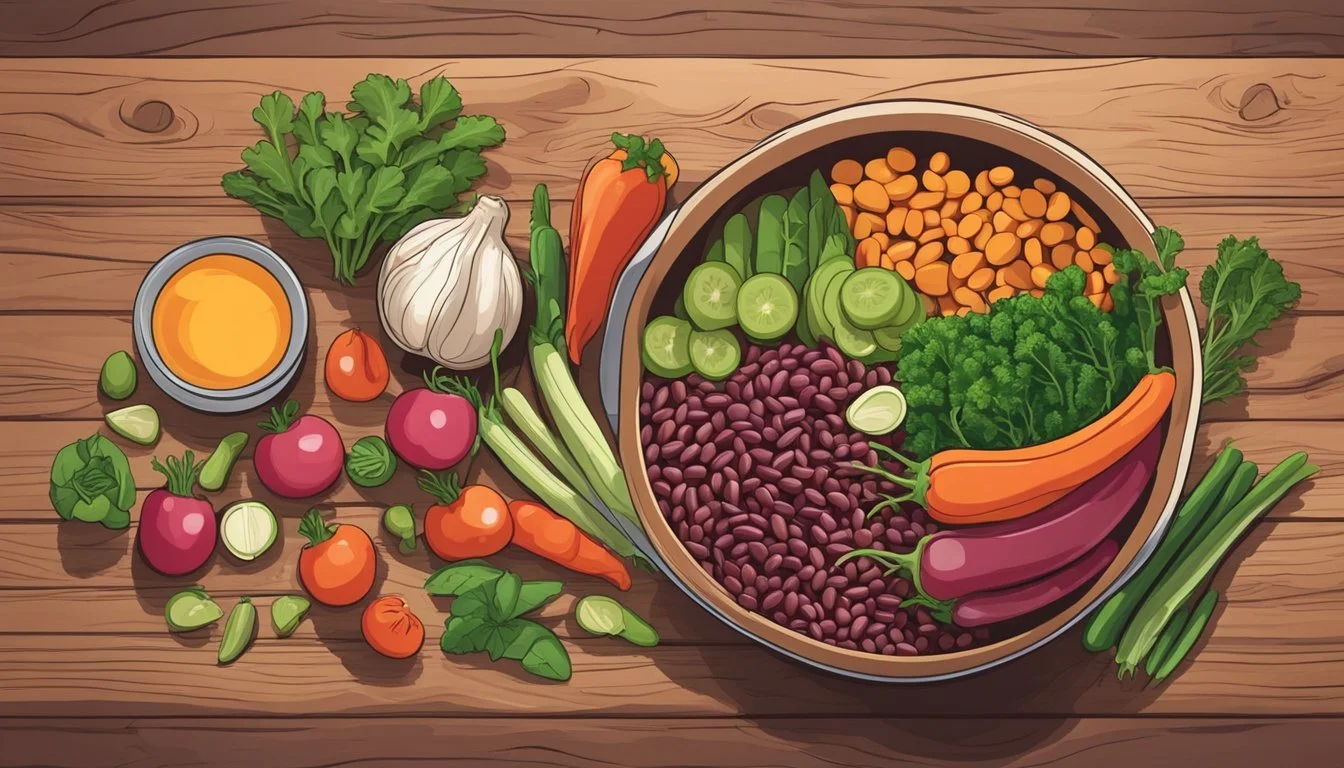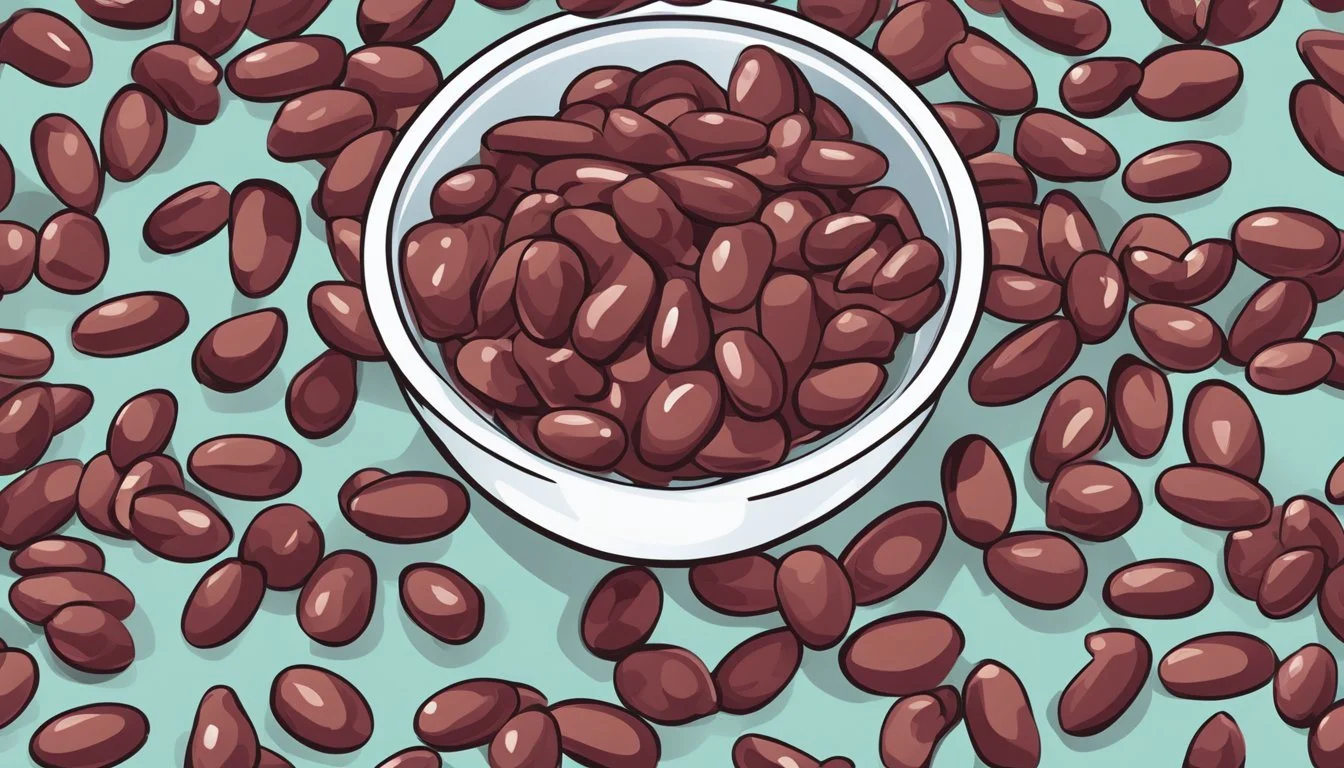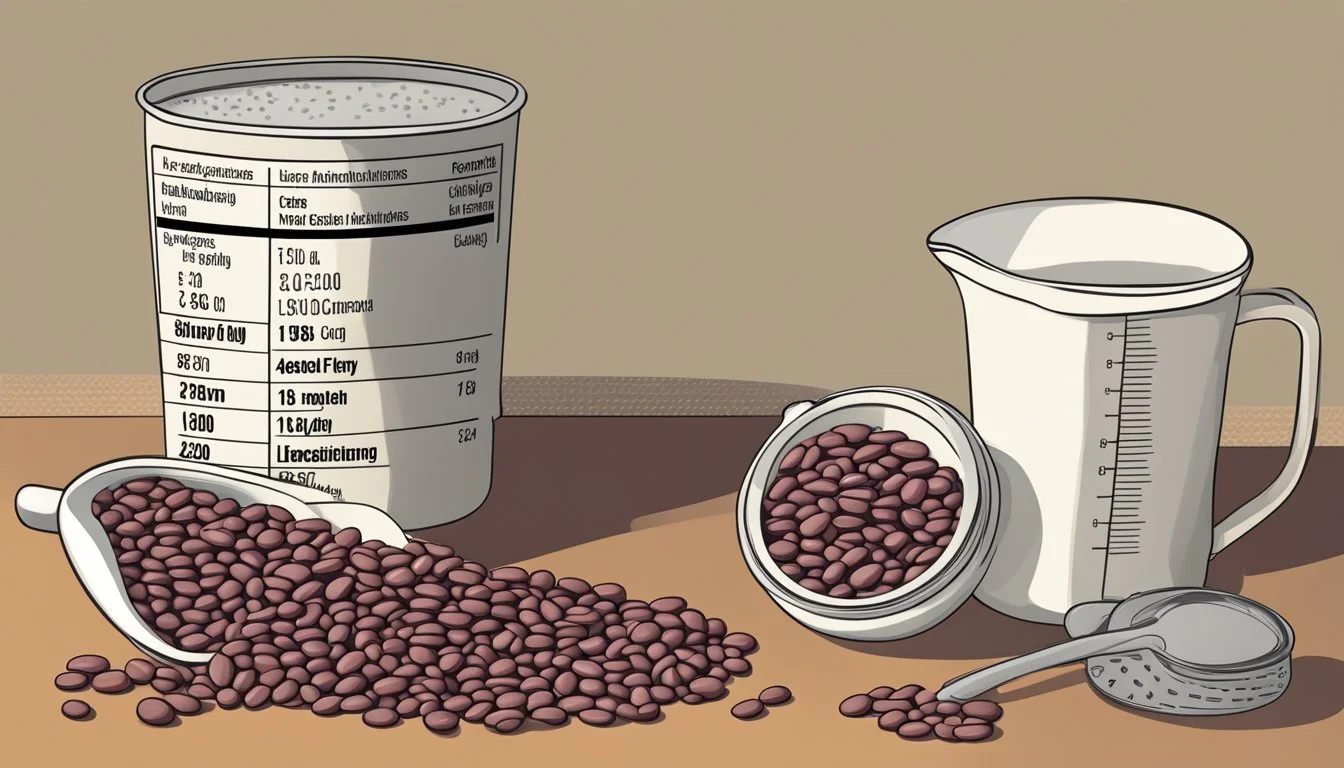How Much Kidney Beans Per Day Is Too Much?
Understanding Daily Limits
Kidney beans are a nutritionally rich food, packed with protein, fiber, vitamins, and minerals that contribute to a healthy diet. Recognized for their numerous health benefits, they serve as an important food in many cultures around the world. Incorporating kidney beans into one's daily meals can lead to an increase in fiber and protein intake, both essential components in maintaining a balanced diet.
However, as is the case with many foods, moderation is key. While there are no specific guidelines for an upper limit to the consumption of kidney beans, it’s important for individuals to consider their overall dietary patterns. Consuming too many kidney beans in a single day could potentially lead to digestive issues due to their high fiber content.
Understanding the nutritional content and health benefits of kidney beans is crucial in determining the optimal daily intake. Kidney beans are not only a good source of macronutrients but also contain essential vitamins and minerals that support various body functions. Yet, it's vital to balance their intake with other foods to ensure a varied and complete diet. When considering how much is too much, it is beneficial to examine the role of portion sizes, individual nutritional needs and personal health goals.
Nutritional Profile of Kidney Beans
Kidney beans are a nutrient-dense food, offering a rich source of vitamins, minerals, and macronutrients within a moderate calorie framework. They are a substantial addition to a balanced diet, contributing significantly to daily nutritional needs.
Macronutrients and Calories
Calories: A 100-gram serving of boiled kidney beans contains approximately 127 calories.
Carbohydrates: This portion provides around 22.8 grams of carbohydrates.
Fats: Kidney beans contain a minimal fat content, with only about 0.5 grams per 100 grams.
Proteins: A relatively high protein content is present, with about 8.7 grams per 100 grams.
Vitamins and Minerals
Kidney beans are a notable source of several essential vitamins and minerals:
Iron: A serving of 100 grams has around 2.1 milligrams of iron.
Potassium: There is a significant potassium content, with approximately 405 milligrams per 100 grams.
Folate: Particularly high in folate, a serving provides around 130 micrograms, which is about 33% of the daily value.
Additional vitamins include thiamin, vitamin K, vitamin B6, though in smaller amounts.
Fiber Content
Dietary Fiber: Kidney beans boast a high fiber content, with about 6.4 grams per 100-gram serving, aiding in digestion and satiety.
Plant-Based Proteins
Kidney beans serve as a good source of plant-based proteins, which are crucial for muscle building and repair, as well as overall body functions.
Health Benefits and Risks
Kidney beans provide significant health benefits but should be consumed in moderation. Excessive consumption may pose health risks, and individuals with specific health conditions should consult healthcare professionals.
Cardiovascular Health
Kidney beans contain fiber and protein which can help reduce blood cholesterol levels, a common risk factor for heart disease. Their low fat content also contributes to heart health. However, overconsumption may lead to an excessive intake of nutrients like potassium, which can be harmful to those with kidney disease.
Blood Sugar Regulation
The fiber in kidney beans helps to slow glucose absorption, aiding in blood sugar regulation. This can be particularly beneficial for those managing diabetes or at risk of developing it. Yet, it's important for individuals to balance their diet to prevent excessive blood sugar fluctuations.
Digestive Health
With a high fiber content, kidney beans promote digestive health and prevent constipation. They aid in maintaining a healthy digestive tract but should be eaten in reasonable quantities to prevent gastrointestinal issues such as bloating or gas.
Weight Management
Kidney beans can contribute to weight loss and obesity prevention due to their ability to promote satiety. The combination of protein and fiber may help people feel fuller for longer, reducing overall calorie intake. Nonetheless, portion sizes are key, as calorie content can add up.
Cancer Prevention
Regular consumption of kidney beans may be linked to a reduced risk of certain cancers due to their antioxidants and fiber content. These components are thought to play a role in cancer prevention. Still, kidney beans should be part of a balanced diet rich in a variety of fruits and vegetables for optimal health.
Daily Intake Recommendations
Determining the appropriate daily intake of kidney beans involves understanding portion sizes and the frequency of consumption. These factors contribute to a balanced diet that aligns with the USDA Dietary Guidelines for Americans.
Portion Sizes
A standard portion size for cooked kidney beans, as defined by nutritionists, is 1/2 cup. This equates to approximately 125 grams. According to the USDA, this serving size contains about 127 calories, and it is important to note that kidney beans are rich in protein and fiber. One should also consider the sodium content; for those on a low-sodium diet, choosing beans with no added salt or rinsing canned beans can help manage sodium intake.
Frequency of Consumption
While the USDA does not specify a daily limit for kidney beans, they are included in the group of legumes that the Dietary Guidelines for Americans suggest should be incorporated into one's diet several times per week. Consuming a variety of protein sources, including legumes like kidney beans, is encouraged. Regular consumption of beans has been linked to various health benefits, but as with any food, they should be eaten in moderation within a balanced diet.
Preparation and Cooking
In the context of bean preparation, both cooking methods and bean types — canned or dried — are paramount to consider for safety and nutritional efficacy. Optimal preparation ensures the reduction of lectins, compounds that can cause gastric discomfort if beans are consumed undercooked.
Cooking Kidney Beans
One initiates by soaking dried kidney beans in water, ideally for 8-24 hours; this expedites cooking and aids in reducing lectins, a natural substance in beans which can be toxic if not properly cooked. Soaking can be done with two methods: overnight or quick-soak. Overnight soaking involves covering the beans with water and letting them sit, which leads to a reduction in cooking time. The quick-soak method entails bringing the beans to a boil for a minute, then letting them stand for an hour off the heat.
Following soaking, the kidney beans should be drained and rinsed. They are then placed in a pot, covered with fresh water (about 10 cups for every pound of beans), and brought to a boil. They are then left to simmer for approximately 45 to 90 minutes until tender. It is essential to ensure the kidney beans have cooked thoroughly to break down the lectins to a safe level.
Canned vs Dried Beans
Canned kidney beans offer convenience as they have already been cooked and therefore require less preparation time. It is still recommended to rinse canned beans to remove excess sodium and potential preservatives. Canned beans can be used directly in recipes, skipping the long soaking and cooking processes required for dried beans.
Dried beans, on the other hand, offer a more cost-effective option and allow for more control over the cooking process, which can be adjusted based on the desired bean firmness. When one opts for dried beans, soaking and cooking times must be taken into account, especially to mitigate the lectin content through adequate boiling.
Bean Type Preparation Time Cooking Time Lectin Reduction Dried 8-24 hours 45-90 minutes Must be boiled Canned None None Already reduced
Incorporating Kidney Beans into the Diet
Kidney beans offer a nutrient-rich addition to the diet. They are a versatile ingredient that can be easily included in various meals, from salads to hearty entrees, suiting both vegetarian and vegan diets.
Kidney Beans in Salads
Kidney beans can elevate the nutritional value of a salad, providing a source of protein and fiber. One can comfortably add a half-cup serving of kidney beans to their salad. Here's a simple way to incorporate them:
Rinse a half-cup of canned kidney beans to reduce sodium content.
Add to a bowl of mixed greens, cherry tomatoes, sliced cucumbers, and red onions.
Toss with a light vinaigrette dressing.
Note: Overconsuming kidney beans in salads can lead to excessive calorie and carbohydrate intake, so moderation is key.
Creating Balanced Meals
When integrating kidney beans into meals, it's essential to consider the overall balance of macronutrients:
Protein: Kidney beans serve as a substantial protein source, making them an ideal component for vegetarian and vegan meals.
Example: 100 grams of kidney beans can be added to tacos as a filling, replacing meat and complemented by vegetables and avocado.
Fiber: The high fiber content in kidney beans supports digestive health and should be balanced with other lower-fiber foods to avoid gastrointestinal discomfort.
Potassium: Kidney beans contain potassium, which is crucial for heart health but should be consumed in appropriate amounts, especially for individuals with kidney issues.
A balanced portion for most individuals is about one cup of cooked kidney beans, included in meals throughout the day. Using them as a meat substitute in tacos or as a hearty addition to soups ensures variety and satisfaction in a healthy eating plan.
Potential Adverse Effects
Eating kidney beans can offer numerous health benefits, but excessive consumption might lead to various adverse effects. It is crucial to understand these potential drawbacks to maintain a balanced diet and avoid health complications.
Digestive Discomfort
Kidney beans contain complex carbohydrates and fiber that can cause digestive discomfort in some individuals. Consuming large quantities may lead to symptoms such as gas, bloating, and diarrhea. This occurs because the human digestive system sometimes struggles to break down the sugars known as oligosaccharides found in beans, resulting in fermentation in the gut and subsequent production of gas. To minimize these effects, one can:
Increase consumption gradually: Allowing the digestive system time to adapt can reduce discomfort.
Cook beans thoroughly: Proper cooking can help break down some of the substances that cause digestive issues.
Allergic Reactions
Although uncommon, some people may experience allergic reactions to kidney beans. Signs of an allergy can include:
Skin rashes
Itching
Gastrointestinal distress
Individuals with a known legume allergy should proceed with caution and consult a healthcare professional before adding kidney beans to their diet.
Toxicity Concerns
Raw or improperly cooked kidney beans contain high levels of lectin, a natural protein that can cause toxicity. The symptoms associated with lectin poisoning are:
Nausea
Vomiting
Diarrhea
It is vital to cook kidney beans thoroughly – boiling for at least 10 minutes at 100 degrees C (212 degrees F) – to destroy the harmful toxins. Unlike other beans, slow cookers may not reach a high enough temperature to eliminate the lectin in kidney beans, so pre-boiling is recommended.
Comparative Analysis with Other Legumes
When considering how much kidney beans one should consume daily, it's helpful to compare them with other legumes in terms of nutritional content and culinary applications.
Nutritional Comparison
Kidney beans, like other legumes, are highly nutritious. They are part of the same family as black beans, pinto beans, chickpeas, and soybeans, all of which fall under the umbrella of common beans (Phaseolus vulgaris). Here's how 100 grams of cooked kidney beans stack up nutritionally against other varieties:
Calories: Kidney beans have approximately 127 calories, compared to chickpeas at around 164 calories and black beans at about 132 calories.
Protein: Kidney beans provide about 9 grams of protein, similar to pinto beans and black beans with minor differences.
Fiber: Kidney beans contain about 7.4 grams of fiber. This is in line with 8.7 grams in black beans and lower than the 12.5 grams found in chickpeas.
Fat: All these legumes are low in fat, with kidney beans containing less than 1 gram.
The nutritional profile of legumes typically varies slightly yet they all contribute positively to a balanced diet when consumed in moderation.
Variety and Usage
The variety of legumes offers a plethora of culinary uses. Kidney beans are often used in hearty dishes such as chili con carne, whereas black beans are a staple in Latin American cuisine. Pinto beans commonly appear in Mexican dishes like burritos and refried beans. Chickpeas are versatile, used in Middle Eastern hummus or Indian chana masala. Soybeans stand out due to their use in making tofu and soy milk.
It is the diversity within the legume family that allows consumers to switch between types for different recipes or nutritional needs, without drastically changing the overall intake of legumes. Moderation is key, as excessive consumption of any one type of legume could lead to gastrointestinal discomfort due to their high fiber content.
Kidney Beans and Chronic Disease Management
Kidney beans can be an integral part of managing chronic diseases due to their nutrient profile, which includes high fiber and protein content while being low in fats. They are beneficial in controlling blood sugar levels and supporting heart health.
Diabetes and Glycemic Control
Kidney beans have a low glycemic index (GI), which makes them an excellent food choice for individuals with diabetes, particularly type 2 diabetes. The glycemic index is a measure of how quickly foods raise blood sugar levels after eating. Foods with a low GI, such as kidney beans, are digested and absorbed more slowly, which results in a gradual rise in blood sugar. This helps in maintaining healthy blood sugar levels.
Glycemic Index: Low GI foods like kidney beans can help in glycemic control for those with diabetes.
Blood Sugar Management: Incorporating kidney beans may contribute to better blood sugar management due to their balanced carbohydrate and high fiber content.
Heart Health and Cholesterol
Regular consumption of kidney beans may also contribute to improved heart health. The fiber in kidney beans helps reduce levels of LDL cholesterol (the "bad" cholesterol), which is a risk factor for heart disease. By integrating kidney beans into the diet, individuals may see a positive impact on their cholesterol profiles.
Cholesterol Reduction: High fiber in kidney beans assists in lowering LDL cholesterol.
Blood Pressure Management: The potassium content in kidney beans can help in managing blood pressure levels.
Conclusion
Kidney beans are a beneficial addition to a diet, particularly when considering plant-based protein sources. They offer a balance of complex carbohydrates and plant-based protein, making them a satiating choice that can support maintaining a healthy weight. Inexpensive and versatile, these beans can effectively replace animal-based proteins in many dishes.
In moderation, kidney beans contribute to gut health by promoting beneficial bacteria. However, one should be cautious about consuming too much. An excess can lead to gastrointestinal discomfort due to their high fiber content. It is generally accepted that incorporating a varied portion of beans into one's daily meal plan is healthier than focusing on a single type.
Here is a summary in a tabular format for recommended daily intake:
Nutrient Daily Recommendation Complex Carbohydrates Balanced as part of total daily intake Plant-based Protein Aim for a variety of sources Fiber 25-30g (including from other foods)
In conclusion, kidney beans are a healthy food choice, rich in nutrients and fitting well within a plant-based diet. They should be eaten as part of a varied diet to avoid potential issues and maximize health benefits. Individuals should listen to their bodies and adjust intake according to personal health needs and recommendations from health professionals.








